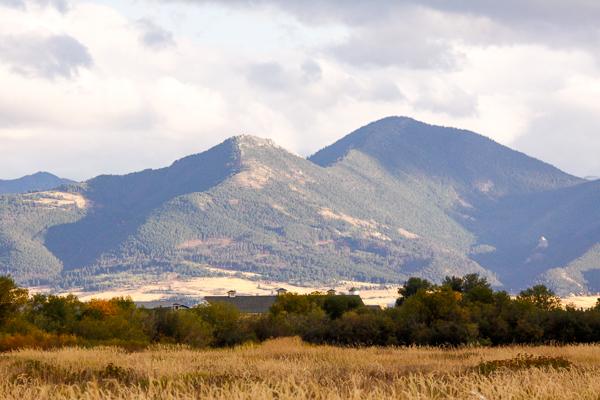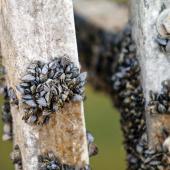If You Leave It Alone, They Will Come
Protecting our public lands.
There's nothing like living on the edge of the Gallatin National Forest. The air smells good, it's quiet, the birds chirp, and oh yeah, the whole thing is a giant ATM. Yep, the Gallatin National Forest is churning out at least $252 million a year.
Of course, this all depends on who you talk to. A lot of people would agree that federally protected land has no real economic value, in the sense that it can't be used to make money, and that it therefore stifles the growth of surrounding economies. These lands could be used to create more than just forest-service jobs, they argue, and as the saying goes, you can't feed your family with scenery. To refute these and other economic arguments supporting land development, environmentalists have generally had to rely more on sentiment than statistics. But that all changed in 1997, when a group of ecological economists led by former University of Maryland professor Dr. Robert Costanza developed a method to calculate the actual dollar value of ecosystems, finally giving the "greens" a way to play ball with the opposition. Costanza is one of many ecological economics pioneers, including people like University of Montana professors Tom Powers, Charles Keegan, and David Spildie, or Colorado State University's John Loomis, who have researched whether protecting land can be as or more economically beneficial than using it for other purposes.
Costanza's method is based on the idea that protected lands (lands designated as national conservation areas, national monuments, national parks, national wildlife refuges, or national wildernesses) provide valuable services like waste treatment, nutrient cycling, animal and plant habitat, soil formation, biodiversity for scientific study, and climate regulation, as well as water filtration, regulation, and supply. The valuation method is similar to the one your insurance agent uses: if the forest is destroyed, how much would it cost to replace these services or get them through other means? How many water-filtration facilities would we have to build? Waste-treatment plants? Zoos? It turns out that using man-made systems gets expensive: according to Costanza's report, replacing and maintaining the world's ecosystems would cost $33 trillion per year.
Which brings us to our backyard ATM. Costanza broke out his work by bioregion, calculating that temporal forests like the Gallatin National Forest would cost $302 per hectare, or about $122 per acre per year to re-create. This implies that the forest's 1.87 million acres generates nearly $228 million in ecological "goods and services" each year, just the way it is, and that doesn't include the value of the forest's lakes and rivers. But that's only half of the story, because there are strong indications that the Gallatin National Forest and its kin have a big hand in the economic growth of surrounding areas, and this too has value.
Mostly this is because it turns out you're not the only one who wants to be near open space. Colorado College professor Frank Hecox's study of 113 rural western counties from 1970 to 2000 found that population, income, and employment growth were highest among counties near protected lands. The Oregon Natural Resources Council and the World Wildlife Fund came to the same conclusion in 2000 in a similar study of over 410 western counties. And a University of Idaho study in 1991 found that 60% of 11,000 Western residents surveyed in 15 counties said the presence of protected land was an important reason they moved there; 45% said it was what kept them there.
Locally, we also know from the University of Montana's 2001-2002 Institute for Tourism and Recreation Research study that tourists spend over $239 million in Gallatin County each year on licenses, outfitters, guides, gear, food, hotels, gas, car rentals, and everything else that comes with being a tourist. And even though 59% of these tourists said they came through Gallatin County because they wanted to be near national parks and open space, 44% of them also went shopping. Quite often, the tourists return bearing jobs: a 1996 MSU study found that 25% of business owners who moved to the Greater Yellowstone area came here first as a tourist. And so it's reasonable to expect that the value of protected land must also include the value of what it attracts. Consequently, even if just 10% of the $239 million tourists spend in Gallatin County each year is attributable to visits to the Gallatin National Forest, this adds another $24 million per year to the forest's value.
Thanks to ecological economics, the good news is that there is a way to have more objective, apples-to-apples conversations about land use and development. It's not that crazy to think the Gallatin National Forest generates at least $252 million in services and direct economic benefits for surrounding communities every year, and I can't help but wonder whether having a number would have affected the 70,000 acres that have been "developed" (and devalued?) there already.
But the bad news is that flies are attracted to honey. Having so many people eager to live near protected land creates more competition for housing and employment, and with all those people clamoring to get away from each other, giving land federal protection might, ironically, create a level of usage and conflict that the federal protection was intended to prevent.
To read Dr. Costanza's study, go to www.uvm.edu/giee/publications/Nature_Paper.pdf.
Connecting the Dots
It is important to make sure people understand that wildlife will only survive if we plan communities with their needs as well as our own in mind.
—Josh Burnim, Lands Program Coordinator, American Wildlands
Born in 1993, the Yellowstone to Yukon (Y2Y) Conservation Initiative is a consortium of approximately 800 organizations working to link the many islands of protected wildlife habitats extending north from just outside Cokeville, Wyoming, to the Yukon Territory's border with Alaska. Y2Y was founded on the idea that when human development surrounds wildlife habitats, animals are unable to migrate, find new mates, search for new food sources, or carry on other natural functions and are ultimately extinguished.
Y2Y advocate and MSU graduate Josh Burnim hiked 800 miles of the vast Yellowstone-to-Yukon area in 2001, starting in Idaho's Sawtooth Mountains and ending in the Kokanee Glacier Provincial Park in the Selkirk Mountains near Nelson, British Columbia, five months later. Burnim embarked on the massive journey to see if wildlife corridors actually existed in this wide swath of land, but discovered that highways, heavily roaded and clearcut areas, and off-road vehicle use inhibited and even prevented the existence of a continuous route for wildlife. Burnim wasn't the first to investigate this fragmented network of habitats on foot; Walkin' Jim Stoltz hiked from Yellowstone to the Yukon border over several periods from 1997 to 2002, and Canadian biologist Karsten Heuer hiked over 2,000 miles from Yellowstone to Watson Lake in the Yukon Territory during 1998 and 1999.
The idea of linking habitats is not without support (or opposition): House Bill 1204 seeks to designate the Greater Yellowstone and other federally protected ecosystems in the Y2Y stretch as Wilderness and designates some of the land in between as Biological Connecting Corridors intended to protect animal migration and other activity. Sponsored by 141 representatives (none of which are from Montana, notably), H.R. 1204 was in the House Subcommittee on Forests and Forest Health when O/B went to press.
Josh Burnim is currently writing a book about his Y2Y experiences. In the meantime, check out Heuer's 2002 book about his incredible Y2Y hike, Walking the Big Wild.
Update: Gallatin River "Outstanding Resource Water" Effort
A pristine 38.8-mile stretch of the Gallatin River, from the Yellowstone National Park boundary to Spanish Creek, is one step closer to being designated an Outstanding Resource Water (ORW). Thanks to American Wildlands and the critical support of its members, area citizens, businesses, and local leaders, the 2005 Montana Legislature authorized $250,000 to the Montana Department of Environmental Quality (DEQ) in the final state budget, which will enable the DEQ to pay for the required Environmental Impact Statement (EIS), a crucial step toward ORW designation. American Wildlands is working with DEQ staff to ensure that the $250,000 authorization is secured, so the public’s review of the ORW proposal can finally begin. If the EIS is completed before the 2007 Legislative Session convenes, lawmakers will finally be able to vote on this issue. Bozeman Sen. Mike Wheat and Rep. Chris Harris deserve special thanks for their tireless efforts to secure EIS funding. For more information, please visit www.wildlands.org.
-Faye Kommers










